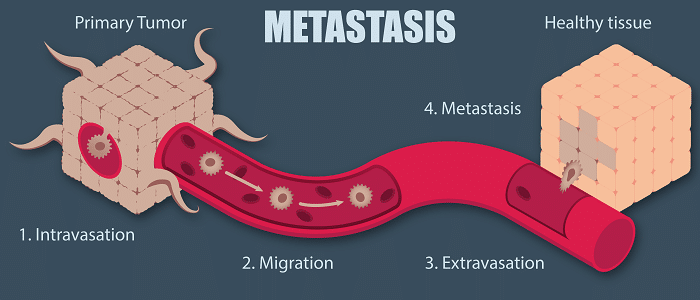On the Fight Against Cancer
Cancer is a disease in which cells divide uncontrollably and invade surrounding tissues. Cancer is caused by damage to the DNA of cells exposed to environmental factors such as chemicals, UV light, radiation or certain viruses. Because such environmental exposure can happen anywhere in the body, many types of cancers exist. For example, carcinomas are a type of cancer formed from epithelial cells, which envelop all the organs and blood vessels of the body.
When the cancer cells move into and invade vital organs, they prevent normal functioning of these organs, leading to the death of the individual. According to the National Cancer Institute, in 2020 about 1.8 million people in the United States will be affected by cancer, and of those people, 606,520 people will die as a result of cancer. Given the large number of cancer patients and the deadlines of this disease, scientists are working hard to understand this disease and develop new treatments that save the lives of people.
 Tools for studying cancer
Tools for studying cancer
The deadliness of cancer lies in the ability of cancer cells to move and invade other organs. Researchers studying cancers are looking for chemical and physical cues that switch on or off the cell invasion or migration mechanisms of cancer cells. By understanding these cues, scientists hope to develop better treatments for this disease.
Platypus Technologies has developed assays for measuring the movement of cells, and these assays are pivotal in the research of cancer cells. Our patented cell exclusion-zone technology provides cell-free detection zones that can be used to accurately measure cell movement. Data can be collected in real-time and accuracy is assured with reproducible detection zones, without the need for artificial membranes. The Oris platform is used by scientists to study environments that either inhibit or stimulate cancer cells to invade or migrate.
The Oris cell migration assay creates cell-free zones through the use of stopper barriers. Scientists can then add compounds to determine how fast or slow cells will migrate into the cell-free zone. The rate of cell migration can be measured using a microscope or a plate reader.
The Oris cell invasion assay provides cell-free detection zones that can be used to directly measure cell invasion into collagen. Stopper barriers create an initial cell-free zone, which is then filled with collagen. The cells invade this collagen, and they can be readily measured using a microscope or a plate reader. In contrast to invasion through a synthetic membrane, this assay directly measures cell invasion through collagen, which is the main component of the connective tissue that envelops most organs of the body.
Platypus Technologies supplies a range of analytical systems for advanced biological research applications. If you would like to learn more about our products or wish to discuss specific partnership opportunities, simply contact us today.